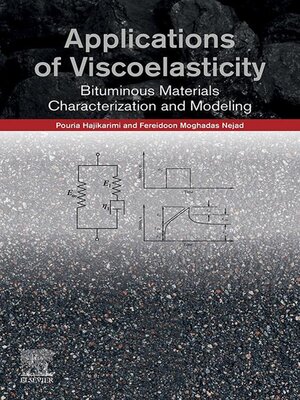Applications of Viscoelasticity
ebook ∣ Bituminous Materials Characterization and Modeling
By Pouria Hajikarimi

Sign up to save your library
With an OverDrive account, you can save your favorite libraries for at-a-glance information about availability. Find out more about OverDrive accounts.
Find this title in Libby, the library reading app by OverDrive.



Search for a digital library with this title
Title found at these libraries:
| Library Name | Distance |
|---|---|
| Loading... |
Applications of Viscoelasticity: Bituminous Materials Characterization and Modeling starts with an introduction to the theory of viscoelasticity, emphasizing its importance to various applications in material characterization and modeling. It next looks at constitutive viscoelastic functions, outlines basic equations for different loading conditions, and introduces the Boltzmann superposition principle, relaxation modulus, and creep compliance. Mechanical models, including integer-order and fractional-order are studied next, featuring real experimentation data alongside the benefits and drawbacks of using each model in various real-world scenarios. The book then covers the correspondence principle, followed by time–temperature superposition, featuring a simple procedure to construct a real master curve and challenges that might be encountered. The concluding chapters cover the Hopkins and Hamming, Park and Kim, and General Power law methods for interconversion of constitutive viscoelastic functions, applications of viscoelasticity for experimental tests, and incremental form of viscoelastic relations for numerical modeling. The book also includes supplementary codes that users can duplicate and use in their own work. - Takes an applied approach to material viscoelasticity, explaining complicated viscoelastic equations and principles
- Presents examples of those equations and principles being applied to common problems in realworld settings
- Covers constitutive viscoelastic functions, including relaxation modulus and creep compliance
- Outlines the construction of a master curve of viscoelastic material considering time–temperature superposition
- Couples the correspondence principle with common viscoelastic experiments, such as threepoint bending beam, axial and torsional bar, and dynamic shear rheometer
- Provides supplementary codes







